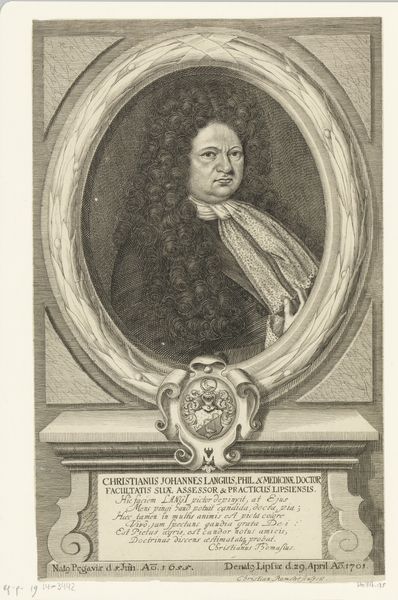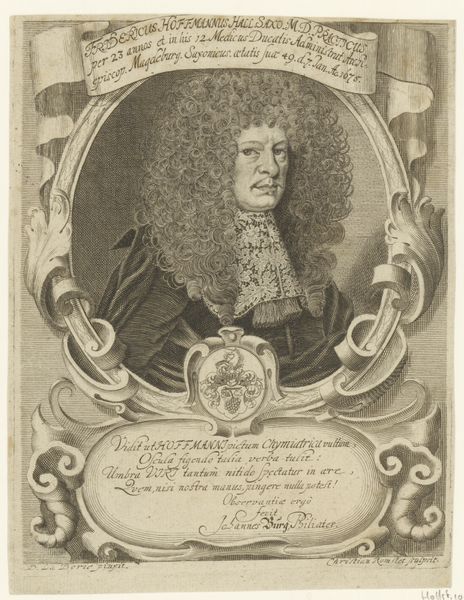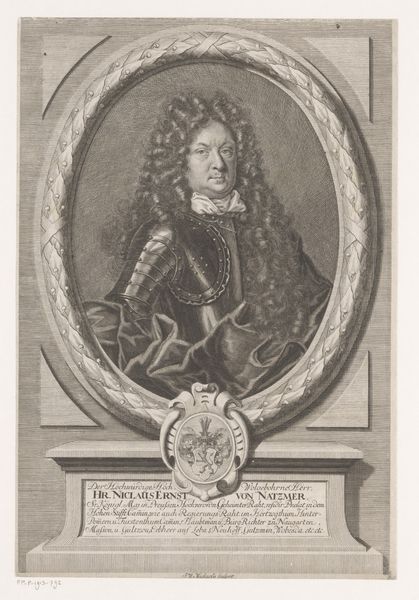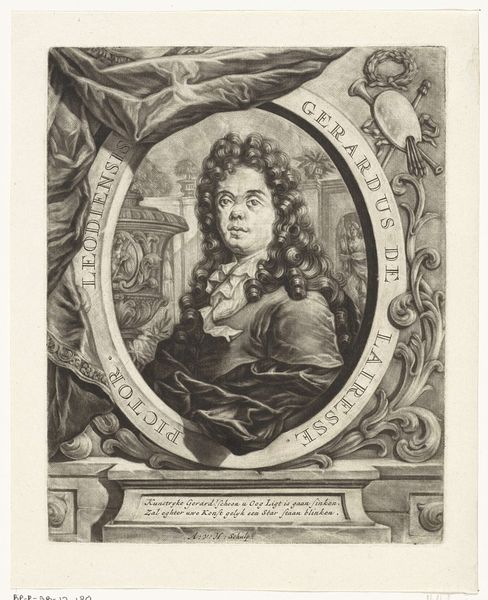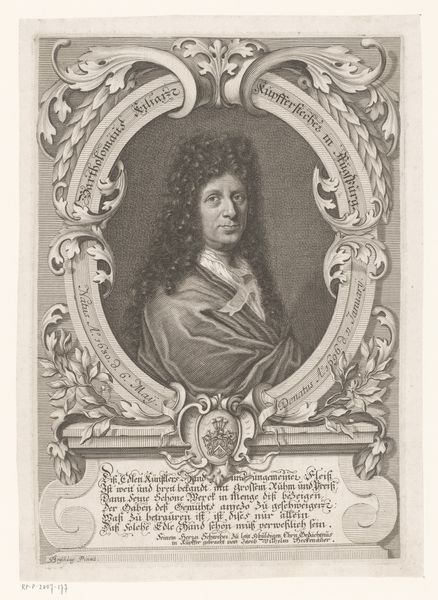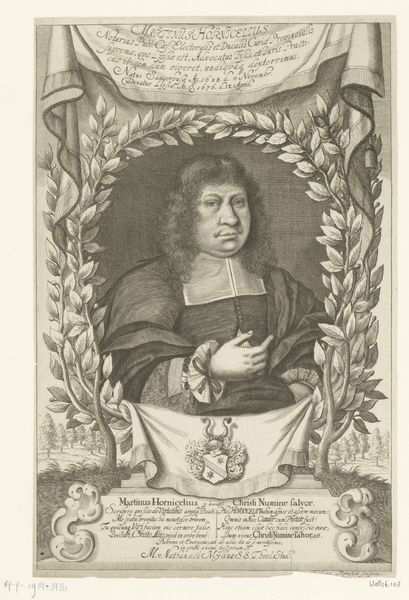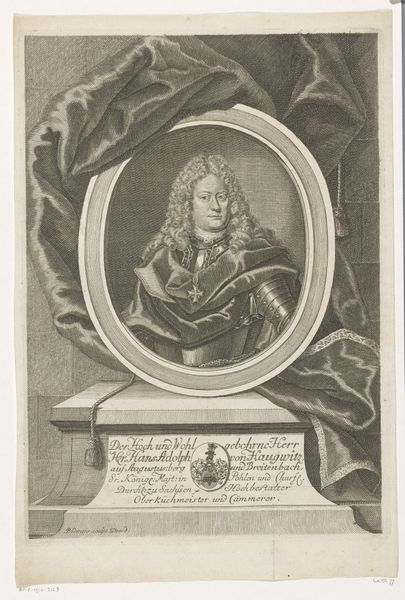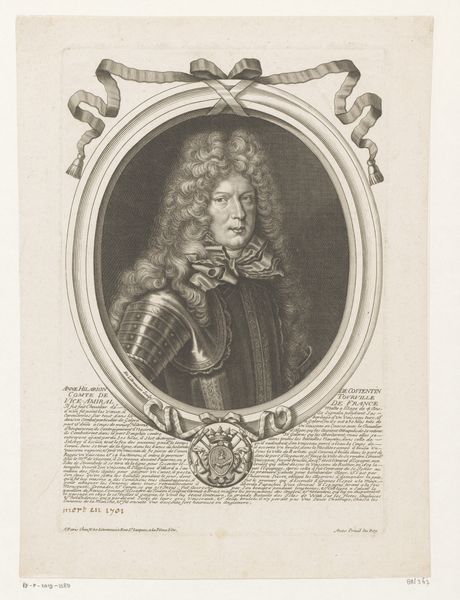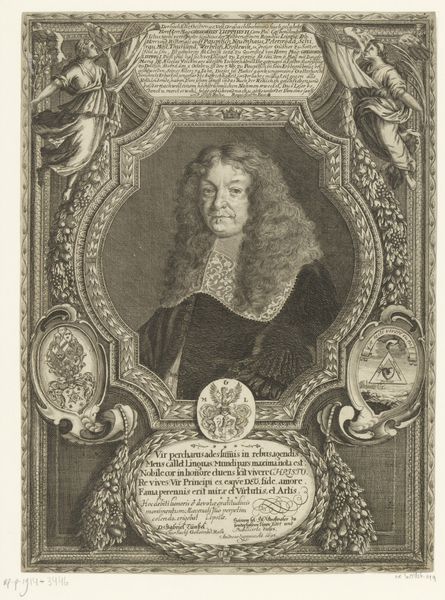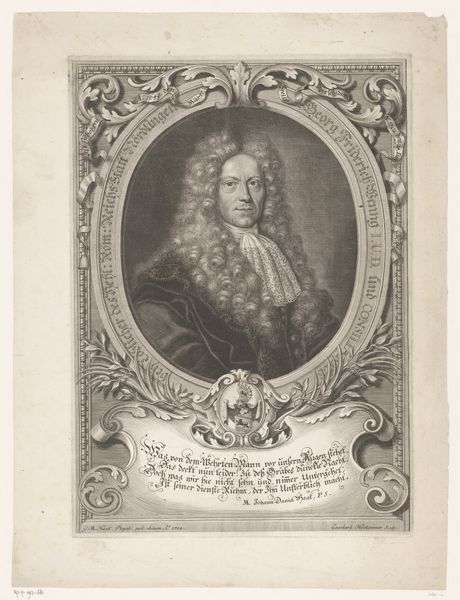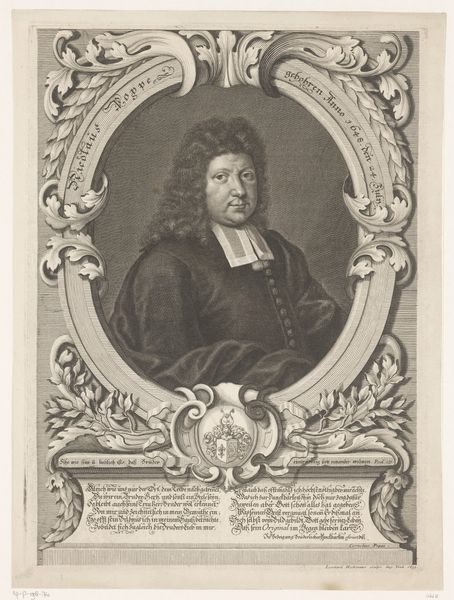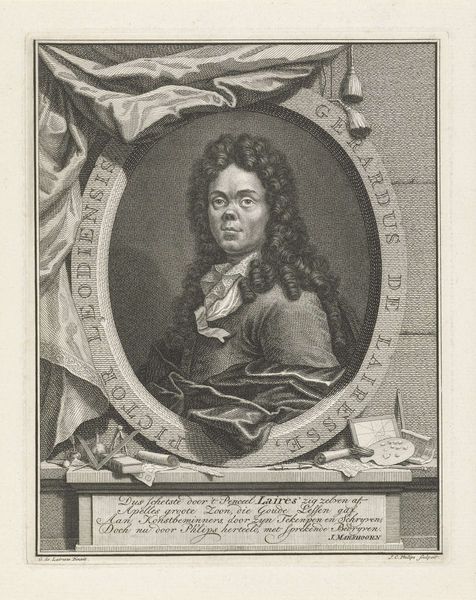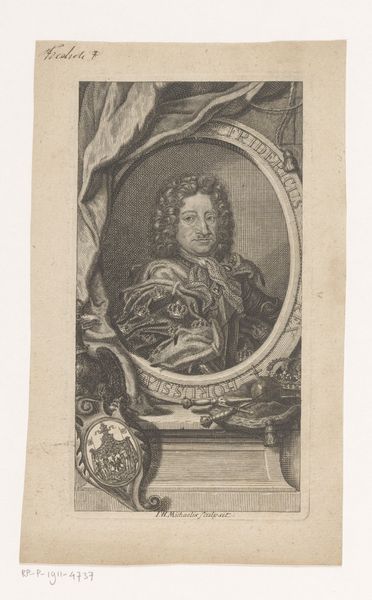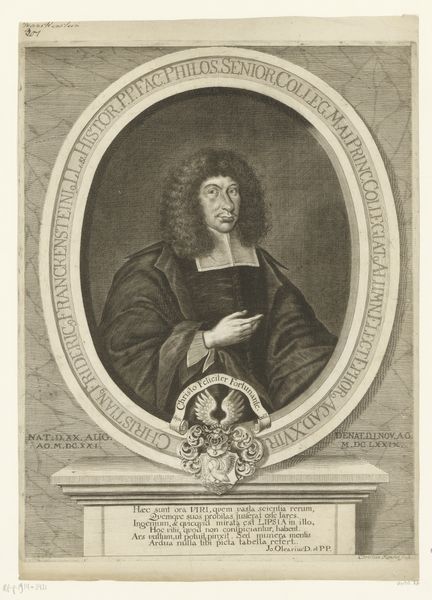
engraving
#
portrait
#
baroque
#
old engraving style
#
history-painting
#
engraving
Dimensions: height 440 mm, width 358 mm
Copyright: Rijks Museum: Open Domain
Curator: Here we have a striking engraving from 1676 by Johann Jakob Thurneysen (I). It’s a portrait titled “Portret van François Joseph de Fegely." Editor: The first thing I notice is the level of detail, especially in the textures – from the opulent drapery to the fine lace collar. There’s a density to the shading that makes it almost palpable. Curator: Indeed. The formal qualities of the engraving exemplify the Baroque aesthetic, seen through its dramatic composition. The figure is framed within an oval, itself adorned with a draped curtain, creating layers of pictorial space. Look at the interplay of light and shadow, defining volume. Editor: And speaking of the sitter, de Fegely himself. He is presented not just as an individual, but as a bearer of social status, evidenced by the sash, lace, and wig. His steady gaze is the focal point, imbuing a sense of self-assurance. I'm drawn to what the emblem at the base may signify. Curator: Good eye. That emblem and inscription identify de Fegely and signify his familial lineage and social standing. The engraver meticulously rendered it to affirm his significance. Note how the artist balanced the symmetry while suggesting depth using hatching and cross-hatching. Editor: Those emblems, almost like personalized brands, speak volumes about Baroque-era identity and cultural memory. This image perpetuates a story of prestige and influence. One almost forgets it’s just ink on paper, but I think that’s part of its power. Curator: Precisely. The tension arises from such meticulous control over medium while suggesting the ephemeral nature of power. Through the careful balance of visual elements, the artwork achieves resolution within its frame. Editor: Agreed. Seeing it through the lens of status, and even the fragility of such, does make me see the Baroque era slightly differently, I appreciate that. Curator: A fruitful observation on your part. The lasting presence of the artwork stands as a testament to both the skills of Thurneysen (I) and the historical weight of the subject portrayed.
Comments
No comments
Be the first to comment and join the conversation on the ultimate creative platform.
